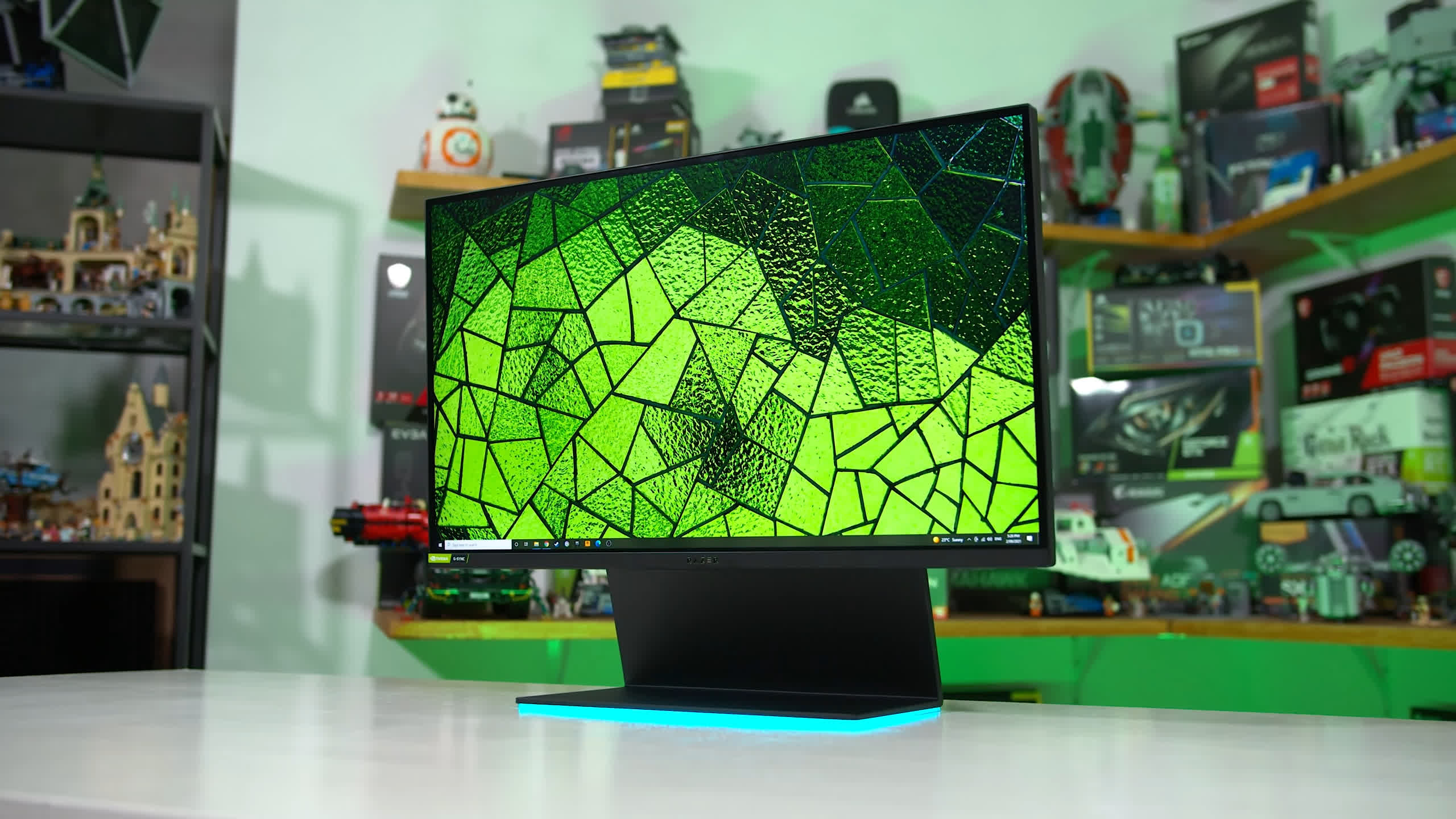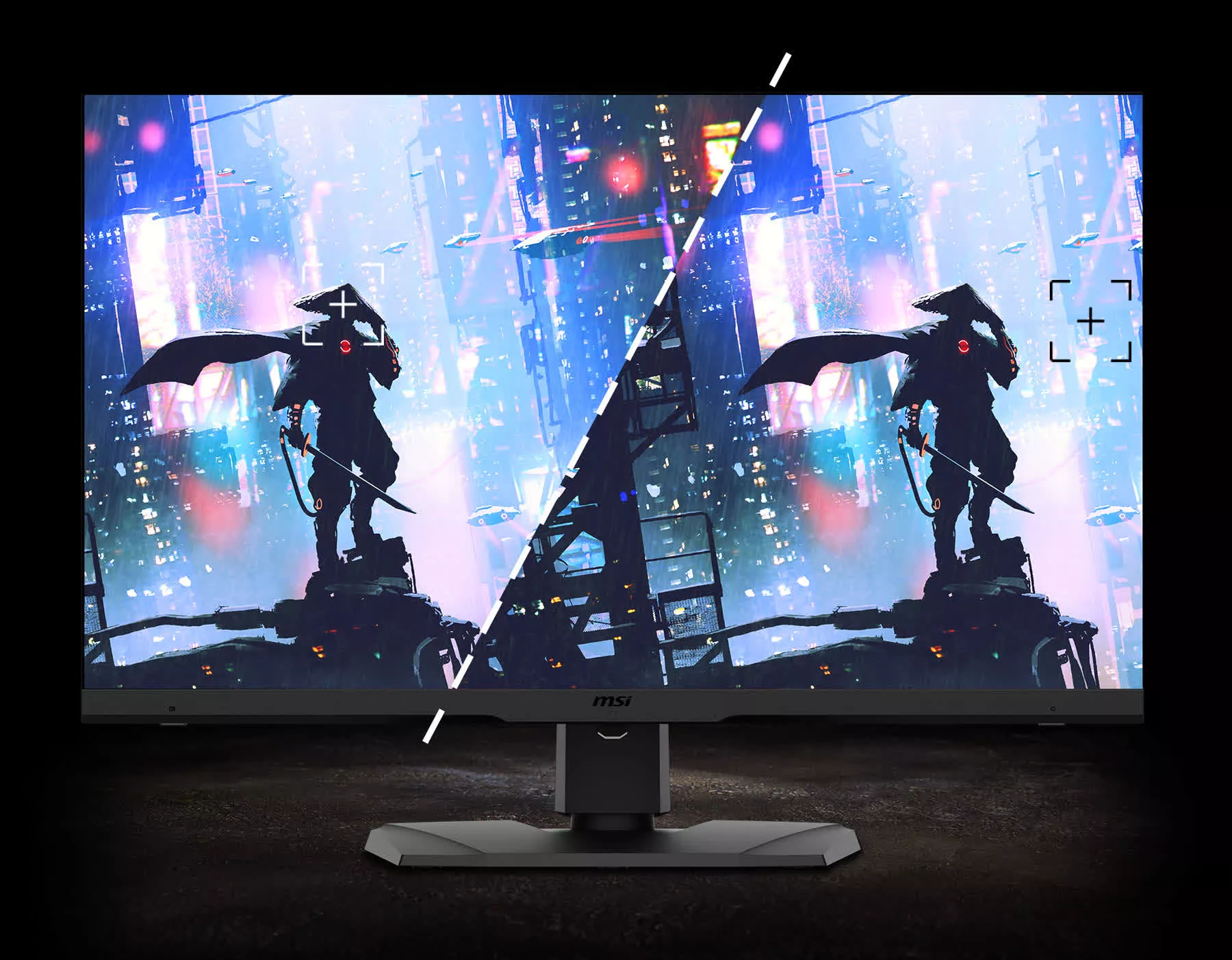Gaming monitors at 1440p remain the sweet spot for those who don't need to spend a ton of money to play at high refresh rates. With recommendations across six categories there's plenty to choose from.
You are using an out of date browser. It may not display this or other websites correctly.
You should upgrade or use an alternative browser.
You should upgrade or use an alternative browser.
The Best 1440p Gaming Monitors: 1H 2023
- Thread starter Scorpus
- Start date
DSirius
Posts: 788 +1,613
Great recommendations, thank you. 
Question for those who have dual monitors and 1 of them is a true HDR, WOLED or last xLED technology and the other is an IPS one for productivity.
When you start the PC are you also using both monitors, or start true HDR monitor only when you consume true HDR content like movies or games?
Because keeping the true HDR OLED monitor all the day on is not proper suited to productivity work or desktop apps due to its non-standard subpixel layout, which causes text rendering issues; as well as its risk of permanent burn in while viewing static content.
I am asking because I have 2 monitors, both IPS, LG 34GN850 and LG 32GQ950-B. I bought them after I read your reviews and checking for the best prices in my region.
LG 32GQ950-B, even if it is not a true HDR monitors, shows HDR content quite great, though I noticed some limitations of IPS displays for HDR.
The recommendations for true HDR monitors convinced me that they can finally display HDR content with elite speed for competitive gamers and stunning HDR visuals for single player gamers in the one package and I am thinking to buy 1, for the right price
Question for those who have dual monitors and 1 of them is a true HDR, WOLED or last xLED technology and the other is an IPS one for productivity.
When you start the PC are you also using both monitors, or start true HDR monitor only when you consume true HDR content like movies or games?
Because keeping the true HDR OLED monitor all the day on is not proper suited to productivity work or desktop apps due to its non-standard subpixel layout, which causes text rendering issues; as well as its risk of permanent burn in while viewing static content.
I am asking because I have 2 monitors, both IPS, LG 34GN850 and LG 32GQ950-B. I bought them after I read your reviews and checking for the best prices in my region.
LG 32GQ950-B, even if it is not a true HDR monitors, shows HDR content quite great, though I noticed some limitations of IPS displays for HDR.
The recommendations for true HDR monitors convinced me that they can finally display HDR content with elite speed for competitive gamers and stunning HDR visuals for single player gamers in the one package and I am thinking to buy 1, for the right price
Last edited:
Good recommendations. But I think that is good to test again the CM GP27q with the latest 1.2 firmware update that ad the low flicker mode. This monitor have such a good price for that kind of specs and if the flicker problem is resolved is a easy recommendation. I believe because of the good price many people interested including and myself. The OLED sure is good but is still annoying with that subpixel layout, burn in limitations and that fan is not very good for that price.
Hello. There's a mistake there: the Asus ROG Swift PG27AQN 27" is neither the only, nor the best, nor even the most easily purchasable 1440p 360 Hz monitor on the market... Look up the Acer Predator XB273U F. (that "F" is important... there's an older model named the XB273U)
e.g.,: https://www.pcworld.com/article/1478644/acer-predator-xb273u-f-monitor-review.html
e.g.,: https://www.pcworld.com/article/1478644/acer-predator-xb273u-f-monitor-review.html
brucek
Posts: 1,722 +2,689
I'm curious if anyone out there regularly games with HDR on while sitting at desktop distance?
I have a decent HDR monitor, it looks great as a tech demo or for a few minutes of wow factor, but pretty quickly for me that goes from "wow that looks great" to "wow that is really hurting my eyes."
I usually game at night in a dimly lit room, and the monitor settings I normally end up picking for sustained gaming sessions are SDR at 120 - 200 nits.
Maybe there's a more moderate HDR setting I haven't found yet? Anyway I'm curious if anyone gets regular use out of this feature.
I have a decent HDR monitor, it looks great as a tech demo or for a few minutes of wow factor, but pretty quickly for me that goes from "wow that looks great" to "wow that is really hurting my eyes."
I usually game at night in a dimly lit room, and the monitor settings I normally end up picking for sustained gaming sessions are SDR at 120 - 200 nits.
Maybe there's a more moderate HDR setting I haven't found yet? Anyway I'm curious if anyone gets regular use out of this feature.
I did not like how it looks. Beside, the main feature I use is night light with somewhat lowered brightness. I lower brightness on all my monitors until they dont hurt my eyes completely.I'm curious if anyone out there regularly games with HDR on while sitting at desktop distance?
I have a decent HDR monitor, it looks great as a tech demo or for a few minutes of wow factor, but pretty quickly for me that goes from "wow that looks great" to "wow that is really hurting my eyes."
I usually game at night in a dimly lit room, and the monitor settings I normally end up picking for sustained gaming sessions are SDR at 120 - 200 nits.
Maybe there's a more moderate HDR setting I haven't found yet? Anyway I'm curious if anyone gets regular use out of this feature.
The article did not mention the RAZER monitor. Are they lost their position in the market?

Razer Raptor 27 Gaming Monitor Review
Today we're taking a deep look at the Razer Raptor 27 and (spoiler alert) this is definitely not a gaming monitor we can recommend. Read on as...
 www.techspot.com
www.techspot.com
Gastec
Posts: 541 +281
Those are quite different monitors. Which of the two do you find to be better or easier to run for gaming, watching films and other desktop tasks and why did you buy both of them and not just one of them?Great recommendations, thank you.
Question for those who have dual monitors and 1 of them is a true HDR, WOLED or last xLED technology and the other is an IPS one for productivity.
When you start the PC are you also using both monitors, or start true HDR monitor only when you consume true HDR content like movies or games?
Because keeping the true HDR OLED monitor all the day on is not proper suited to productivity work or desktop apps due to its non-standard subpixel layout, which causes text rendering issues; as well as its risk of permanent burn in while viewing static content.
I am asking because I have 2 monitors, both IPS, LG 34GN850 and LG 32GQ950-B. I bought them after I read your reviews and checking for the best prices in my region.
LG 32GQ950-B, even if it is not a true HDR monitors, shows HDR content quite great, though I noticed some limitations of IPS displays for HDR.
The recommendations for true HDR monitors convinced me that they can finally display HDR content with elite speed for competitive gamers and stunning HDR visuals for single player gamers in the one package and I am thinking to buy 1, for the right price
DSirius
Posts: 788 +1,613
I bought 1st LG 34GN850 almost 2 years ago, which is a "UWQHD" 3440x1440 monitor. (I have also a Samsung Odyssey 7 27"). In December 2022, I found a super discounted offer, new LG 32GQ950-B for 650 euro so I bought it. Wanted to see the difference from 2K and UWQHD vs 4K.Those are quite different monitors. Which of the two do you find to be better or easier to run for gaming, watching films and other desktop tasks and why did you buy both of them and not just one of them?
LG 32GQ950-B 4K is better for HDR games and HDR movies, even if it is not true HDR it is better than the fake 400HDR of LG 34GN850.
So I am using LG 34GN850 for productivity and LG 32GQ950-B for 4K HDR games and movies.
In SDR mode LG 32GQ950-B is looking somehow washed comparing with LG 34GN850.
I do not know why, I downloaded the ICC profile from Tim HUB but in SDR is not looking better, only in HDR content, in SDR is looking little "washed" vs LG 34GN850.
And I would say that the difference between 2K and 4K is small from my point of view. Better to have a true HDR monitor 2K or UWQHD than an average 4K monitor if the price is similar.
In conclusion I am quite OK with both monitors though I thought that the difference between 2K vs 4K should have been bigger, but for me it is not. For 4K, FPS in games is "noticeable" lower, however it is over 100FPS in most games.
Also if you have to use the monitor for productivity too, not only for HDR games or movies, my opinion is that these new HDR monitors with burn in static issues and low clarity text are not so good as primary monitor, I would use them only in a dual monitor configuration.
Last edited:
Have you tried going back to 1080p from 2k or 4k?More than happy with my sub $300 240hz 1ms monitor:
Alienware AW2521HFA 24.5 Inch Full HD (1920x1080) Gaming Monitor, 240Hz, IPS, 1ms, AMD FreeSync Premium, NVIDIA G-SYNC Compatible, DisplayPort, 2x HDMI, 5x USB 3.0, 3 Year Warranty
I tried. It looks grainy. I can not unsee it. It seems unnoticeable but only until you
work for a bit at a higher rez monitor.
If you have a chance to work or play for a few hours on a 4k monitor, you might realize it is something that you need.
DSirius
Posts: 788 +1,613
True, the same is with refresh rate, once you play with a monitor with 144-165Hz or 240Hz you never go back to 60-75Hz, because you sense the difference, and you cannot unseen after.Have you tried going back to 1080p from 2k or 4k?
I tried. It looks grainy. I can not unsee it. It seems unnoticeable but only until you
work for a bit at a higher rez monitor.
If you have a chance to work or play for a few hours on a 4k monitor, you might realize it is something that you need.
Great decision anyway.I have two Dell S3222DGM, I bought one initially and loved it, so I bought a second one.
Q Wales
Posts: 106 +25
Opening a can of worms for me there though as I would have to splash out on a new GPU too :-/ My 1660S is doing what is required for now and I'm not upgrading until either I'm forced to or these clowns stop charging ridiculous prices for their hardware. Tend to just play Fortnite and everything is pretty spot on in performance mode 240fps, low ping and graphics are fine but it would be nice to be able to switch the gravy on. Stuff looks a lot more glamorous on my mates Xbox but if I start switching on all the pretty settings I'm then playing at a disadvantage by losing latency etc.Have you tried going back to 1080p from 2k or 4k?
I tried. It looks grainy. I can not unsee it. It seems unnoticeable but only until you
work for a bit at a higher rez monitor.
If you have a chance to work or play for a few hours on a 4k monitor, you might realize it is something that you need.
Going down in res is easier for me, than going down in refresh rate.Have you tried going back to 1080p from 2k or 4k?
I tried. It looks grainy. I can not unsee it. It seems unnoticeable but only until you
work for a bit at a higher rez monitor.
If you have a chance to work or play for a few hours on a 4k monitor, you might realize it is something that you need.
60-75 Hz is horrible after years on 165-280 Hz.
However 1080p is dead to me. I will stay at 1440p/240Hz till 4K makes more sense (meaning way more 4K/240Hz options and faster GPUs).
I love 240 Hz because of the VRR range it has. Alot of games can easily go 200+ fps at times. ~200 fps @ ~200 Hz = Extremely smooth. Easily noticeable over 100 fps @ 100 Hz for me, yet 100+ fps is "fine" and my minimum acceptable framerate for PC gaming. Gladly lowering settings and image quality to stay above 100 fps.
Smoothness means more than IQ for me. Smoothness = Immersion.
Last edited:
I use HDR while gaming in a dark room, and I sit about 15 inches from my monitor. However, I must note that some games do not look good in HDR so I don't always opt for it. I should also disclose that I have the Alienware AW3423DW QD-OLED monitor - which is currently as good as a monitor can get for gaming, visually, especially in HDR.I'm curious if anyone out there regularly games with HDR on while sitting at desktop distance?
I have a decent HDR monitor, it looks great as a tech demo or for a few minutes of wow factor, but pretty quickly for me that goes from "wow that looks great" to "wow that is really hurting my eyes."
I usually game at night in a dimly lit room, and the monitor settings I normally end up picking for sustained gaming sessions are SDR at 120 - 200 nits.
Maybe there's a more moderate HDR setting I haven't found yet? Anyway I'm curious if anyone gets regular use out of this feature.
I just turn down the contrast until it's comfortable for long sessions. HDR makes up for the contrast loss, and my games look phenomenal. I'm not sure about all monitors, but when I'm in HDR mode the brightness setting is disabled. Overall, I've found that the contrast setting has a much stronger effect in making the overall picture brighter or dimmer than brightness settings, anyway.
Similar threads
- Replies
- 5
- Views
- 444
- Replies
- 28
- Views
- 266
- Replies
- 17
- Views
- 691
Latest posts
-
Razer launches $160 Viper V3 Pro gaming mouse with 8,000 Hz polling rate
- texasrattler replied
-
TechSpot is hiring: We're looking for tech enthusiasts with sharp writing skills
- Julio Franco replied
-
Apple Vision Pro is facing declining interest and sales among consumers
- kiwigraeme replied
-
Viewing a color E-ink display under a 230x digital microscope
- Tinderbox replied
-
TechSpot is dedicated to computer enthusiasts and power users.
Ask a question and give support.
Join the community here, it only takes a minute.
